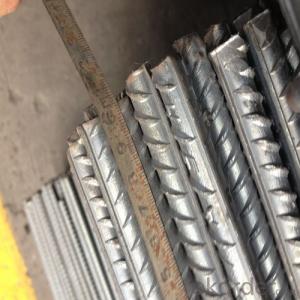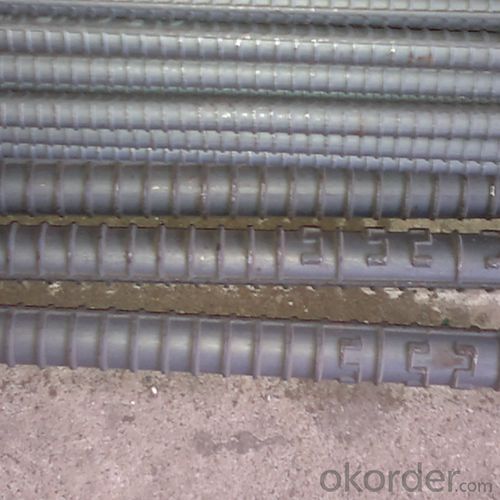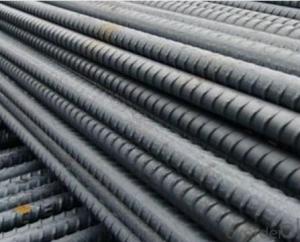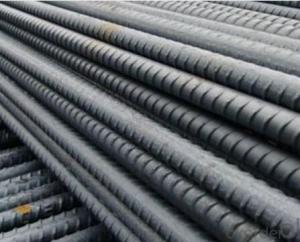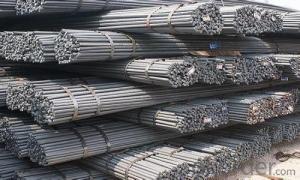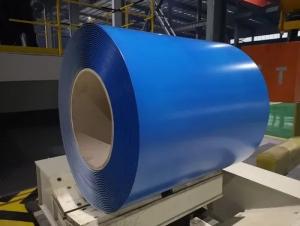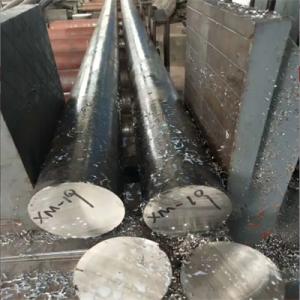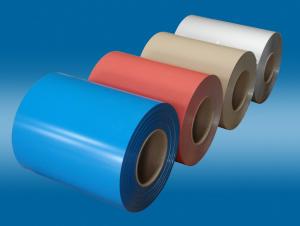Rebar 5 Weight Deformed Steel Bar HRB4000 HRB500 ASTM A615 Gr40/Gr60
- Loading Port:
- Tianjin
- Payment Terms:
- TT or LC
- Min Order Qty:
- 100 m.t.
- Supply Capability:
- 40000 m.t./month
OKorder Service Pledge
OKorder Financial Service
You Might Also Like
Product Description:
OKorder is offering Deformed Steel Bar HRB4000 HRB500 ASTM A615 GR40/GR60 at great prices with worldwide shipping. Our supplier is a world-class manufacturer of steel, with our products utilized the world over. OKorder annually supplies products to European, North American and Asian markets. We provide quotations within 24 hours of receiving an inquiry and guarantee competitive prices.
Product Applications:
Deformed Steel Bar HRB4000 HRB500 ASTM A615 GR40/GR60 are ideal for structural applications and are widely used in the construction of buildings and bridges, and the manufacturing, petrochemical, and transportation industries.
Product Advantages:
OKorder's Deformed Steel Bar HRB4000 HRB500 ASTM A615 GR40/GR60 are durable, strong, and resist corrosion.
Main Product Features:
· Premium quality
· Prompt delivery & seaworthy packing (30 days after receiving deposit)
· Corrosion resistance
· Can be recycled and reused
· Mill test certification
· Professional Service
· Competitive pricing
Product Specifications:
Standard | GB | HRB400 | |
Diameter | 6mm,8mm,10mm,12mm,14mm,16mm,18mm,20mm, 22mm,25mm,28mm,32mm,36mm,40mm,50mm | ||
Length | 6M, 9M,12M or as required | ||
Place of origin | Hebei, China mainland | ||
Advantages | exact size, regular package, chemical and mechanical properties are stable. | ||
Type | Hot rolled deformed steel bar | ||
Brand name | DRAGON | ||
Chemical Composition: (Please kindly find our chemistry of our material based on HRB500 as below for your information)
Grade | Technical data of the original chemical composition (%) | ||||||
C | Mn | Si | S | P | V | ||
HRB400 | ≤0.25 | ≤1.60 | ≤0.80 | ≤0.045 | ≤0.045 | 0.04-0.12 | |
Physical capability | |||||||
Yield Strength (N/cm²) | Tensile Strength (N/cm²) | Elongation (%) | |||||
≥400 | ≥570 | ≥14 | |||||
Theoretical weight and section area of each diameter as below for your information:
Diameter(mm) | Section area (mm²) | Mass(kg/m) | Weight of 12m bar(kg) |
6 | 28.27 | 0.222 | 2.664 |
8 | 50.27 | 0.395 | 4.74 |
10 | 78.54 | 0.617 | 7.404 |
12 | 113.1 | 0.888 | 10.656 |
14 | 153.9 | 1.21 | 14.52 |
16 | 201.1 | 1.58 | 18.96 |
18 | 254.5 | 2.00 | 24 |
20 | 314.2 | 2.47 | 29.64 |
22 | 380.1 | 2.98 | 35.76 |
25 | 490.9 | 3.85 | 46.2 |
28 | 615.8 | 4.83 | 57.96 |
32 | 804.2 | 6.31 | 75.72 |
36 | 1018 | 7.99 | 98.88 |
40 | 1257 | 9.87 | 118.44 |
50 | 1964 | 15.42 | 185.04 |
Usage and Applications of HRB400 Deformed Steel Bar:
Deformed bar is widely used in buildings, bridges, roads and other engineering construction. Big to highways, railways, bridges, culverts, tunnels, public facilities such as flood control, dam, small to housing construction, beam, column, wall and the foundation of the plate, deformed bar is an integral structure material. With the development of world economy and the vigorous development of infrastructure construction, real estate, the demand for deformed bar will be larger and larger..
Packaging & Delivery of HRB400 Deformed Steel Bar:
Packaging Detail: products are packed in bundle and then shipped by container or bulk vessel, deformed bar is usually naked strapping delivery, when storing, please pay attention to moisture proof. The performance of rust will produce adverse effect.
Each bundle weight: 2-3MT, or as required
Payment term: TT or L/C
Delivery Detail: within 45 days after received advanced payment or LC.
Label: to be specified by customer, generally, each bundle has 1-2 labels
Trade terms: FOB, CFR, CIF
FAQ:
Q1: Why buy Materials & Equipment from OKorder.com?
A1: All products offered byOKorder.com are carefully selected from China's most reliable manufacturing enterprises. Through its ISO certifications, OKorder.com adheres to the highest standards and a commitment to supply chain safety and customer satisfaction.
Q2: How do we guarantee the quality of our products?
A2: We have established an advanced quality management system which conducts strict quality tests at every step, from raw materials to the final product. At the same time, we provide extensive follow-up service assurances as required.
Q3: How soon can we receive the product after purchase?
A3: Within three days of placing an order, we will begin production. The specific shipping date is dependent upon international and government factors, but is typically 7 to 10 workdays.
Q4: What makes stainless steel stainless?
A4: Stainless steel must contain at least 10.5 % chromium. It is this element that reacts with the oxygen in the air to form a complex chrome-oxide surface layer that is invisible but strong enough to prevent further oxygen from "staining" (rusting) the surface. Higher levels of chromium and the addition of other alloying elements such as nickel and molybdenum enhance this surface layer and improve the corrosion resistance of the stainless material.
Q5: Can stainless steel rust?
A5: Stainless does not "rust" as you think of regular steel rusting with a red oxide on the surface that flakes off. If you see red rust it is probably due to some iron particles that have contaminated the surface of the stainless steel and it is these iron particles that are rusting. Look at the source of the rusting and see if you can remove it from the surface.
Images:
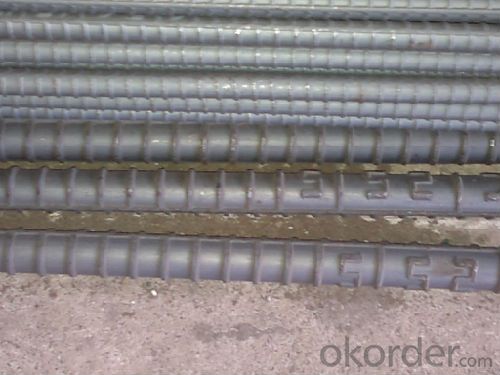
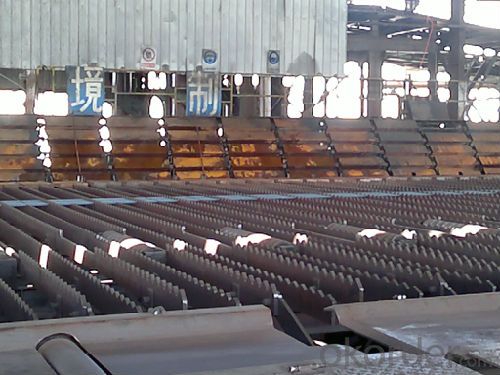
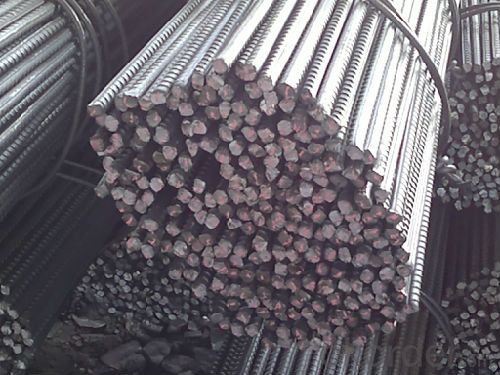
- Q:What is the minimum cover for steel rebars in concrete?
- The minimum cover for steel rebars in concrete is typically specified by building codes and design standards. The exact minimum cover requirements can vary depending on factors such as the type of structure, the environmental conditions, and the desired level of durability. However, as a general guideline, the minimum cover for steel rebars in concrete is often in the range of 1.5 to 2 inches (38 to 50 millimeters) to provide sufficient protection against corrosion and ensure structural integrity.
- Q:How do steel rebars affect the environmental sustainability of a structure?
- Steel rebars can have both positive and negative impacts on the environmental sustainability of a structure. On one hand, steel rebars are a sustainable choice as they are made from recycled materials. Steel is one of the most recycled materials in the world, which helps in reducing the demand for virgin resources and the associated environmental impacts of extraction and processing. Additionally, steel rebars are highly durable and have a long lifespan, which means that structures reinforced with steel rebars require less maintenance and replacement over time. This reduces the overall environmental impact associated with the construction and demolition of structures. On the other hand, the production of steel rebars has some negative environmental consequences. The manufacturing process involves high energy consumption, carbon emissions, and the release of pollutants into the atmosphere. The extraction and processing of iron ore, as well as the conversion of iron into steel, can contribute to deforestation, air and water pollution, and habitat destruction. However, the negative impacts of steel rebars can be mitigated through sustainable manufacturing practices. For example, using energy-efficient technologies, utilizing renewable energy sources, and implementing strict emissions controls can help reduce the environmental footprint of steel production. Moreover, the environmental sustainability of a structure also depends on the overall design and construction practices. By adopting sustainable design principles, such as optimizing the use of materials, minimizing waste, and incorporating energy-efficient features, the negative impacts of steel rebars can be further reduced. In conclusion, while steel rebars have some negative environmental impacts in their production process, their use in construction offers several sustainability benefits such as recycling, durability, and reduced maintenance needs. By adopting sustainable manufacturing practices and integrating them into environmentally conscious design and construction practices, the overall environmental sustainability of structures can be greatly enhanced.
- Q:How do steel rebars contribute to the structural soundness of a building?
- Steel rebars are crucial components in the construction industry as they play a significant role in ensuring the structural soundness of buildings. These reinforcing bars, commonly known as rebars, are made of steel and are embedded within concrete to provide additional strength and reinforcement. One of the primary ways steel rebars contribute to the structural soundness of a building is by increasing its tensile strength. While concrete is excellent when it comes to handling compressive forces, it is relatively weak in terms of tension. When a building is subject to various loads, such as those caused by wind, earthquakes, or even its self-weight, it experiences both compressive and tensile forces. By adding steel rebars to concrete, the tensile strength of the overall structure is significantly enhanced. This prevents the concrete from cracking or failing under tension, ensuring the building's stability and durability over time. Furthermore, steel rebars also improve the overall ductility of a building. Ductility refers to the ability of a material to deform under stress without fracturing. Concrete, being a brittle material, lacks ductility and tends to fail abruptly when subjected to excessive stress. By incorporating steel rebars, the concrete-reinforced structure gains the ability to absorb and distribute energy, allowing it to undergo controlled deformations without sudden failure. This increased ductility ensures that the building can withstand dynamic loads, such as those generated during an earthquake, and reduces the risk of catastrophic collapse. In addition to improving tensile strength and ductility, steel rebars also enhance the overall stability and load-bearing capacity of a building. By distributing the load more evenly across the structure, they help to minimize localized stress concentrations, preventing potential weaknesses or failure points. This distributed load-bearing capacity ensures that the building can support its intended weight and withstand the forces acting upon it. Moreover, steel rebars also contribute to the longevity of a building by providing protection against corrosion. Steel is vulnerable to rust when exposed to moisture and air, which can weaken its structural integrity. However, rebars are often coated with epoxy or other anti-corrosion materials to prevent rusting. This protective layer ensures that the steel remains intact and maintains its strength over time, further enhancing the structural soundness of the building. In summary, steel rebars play a vital role in ensuring the structural soundness of a building. They increase the tensile strength of concrete, improve its ductility, enhance load-bearing capacity, and protect against corrosion. By incorporating steel rebars, buildings can withstand various loads, resist cracking, and ensure long-term stability and durability.
- Q:How do steel rebars improve the ductility of a structure?
- By reinforcing and resisting tension forces, steel rebars enhance the ductility of a structure. When external loads, like earthquakes or strong winds, are applied to a structure, it undergoes tensile stresses, which can result in cracking and failure. However, the inclusion of steel rebars, typically composed of high-strength steel, in concrete structures improves their capacity to withstand and distribute these forces. The presence of rebars in the concrete boosts its tensile strength, enabling it to withstand deformation and cracking. When the structure faces tension, the rebars bear the majority of the load, preventing the concrete from collapsing. This redistribution of forces leads to increased ductility, which refers to a material's ability to undergo deformation without breaking. Moreover, steel rebars also fortify the structural integrity of a building by hindering the propagation of cracks. As the concrete cracks under tension, the rebars act as a barrier, confining the growth of these cracks and preventing them from spreading throughout the structure. This containment of cracks enhances the overall resilience of the building, minimizing the risk of catastrophic failure. In conclusion, steel rebars are vital in enhancing the ductility of a structure by improving tensile strength, redistributing forces, and limiting crack propagation. By incorporating rebars into concrete, engineers can design and construct structures capable of withstanding various external forces, assuring the safety and longevity of the building.
- Q:Can steel rebars be used in residential swimming pool construction?
- Yes, steel rebars can be used in residential swimming pool construction. Steel rebars are commonly used to reinforce concrete structures, including swimming pools. The rebars provide added strength and durability to the concrete, making it capable of withstanding the pressure and weight of the water. The use of steel rebars helps prevent cracking and structural damage to the pool over time. Moreover, steel rebars are readily available, cost-effective, and can be easily installed by professional pool builders. Overall, the inclusion of steel rebars in residential swimming pool construction is highly recommended to ensure a long-lasting and reliable pool structure.
- Q:Are there any specific guidelines for handling and placing steel rebars in concrete?
- Yes, there are specific guidelines for handling and placing steel rebars in concrete. These guidelines include ensuring proper cleaning, cutting, and bending of rebars, maintaining proper spacing and alignment, securely fastening rebars, and providing adequate concrete cover to prevent corrosion. Additionally, guidelines may vary depending on the project specifications, structural requirements, and local building codes.
- Q:What is the purpose of using steel rebars in construction?
- The purpose of using steel rebars in construction is to increase the strength and durability of concrete structures. The rebars provide reinforcement and help resist tension forces, preventing cracks and failure in the concrete.
- Q:What are the different types of steel coatings used on rebars?
- There are several types of steel coatings used on rebars, including epoxy coatings, zinc coatings, and galvanized coatings. Epoxy coatings provide corrosion resistance and can be used in both indoor and outdoor applications. Zinc coatings, such as zinc-rich paint or zinc thermal spray, provide sacrificial protection against corrosion. Galvanized coatings involve immersing the rebar in molten zinc, providing long-lasting corrosion resistance.
- Q:Can steel rebars be used in road and bridge construction?
- Yes, steel rebars can be used in road and bridge construction. Steel rebars provide structural integrity and strength to reinforce concrete structures, making them suitable for use in the construction of roads and bridges. They enhance the durability, load-bearing capacity, and resistance to cracking and deformation in these infrastructure projects.
- Q:How do steel rebars contribute to the overall fire safety of a structure?
- Steel rebars contribute to the overall fire safety of a structure by providing reinforcement and strength to concrete, making it more resistant to heat and fire. The high melting point of steel ensures that the rebars maintain their structural integrity even under extreme temperatures, preventing the collapse of the building.
1. Manufacturer Overview |
|
|---|---|
| Location | |
| Year Established | |
| Annual Output Value | |
| Main Markets | |
| Company Certifications | |
2. Manufacturer Certificates |
|
|---|---|
| a) Certification Name | |
| Range | |
| Reference | |
| Validity Period | |
3. Manufacturer Capability |
|
|---|---|
| a)Trade Capacity | |
| Nearest Port | |
| Export Percentage | |
| No.of Employees in Trade Department | |
| Language Spoken: | |
| b)Factory Information | |
| Factory Size: | |
| No. of Production Lines | |
| Contract Manufacturing | |
| Product Price Range | |
Send your message to us
Rebar 5 Weight Deformed Steel Bar HRB4000 HRB500 ASTM A615 Gr40/Gr60
- Loading Port:
- Tianjin
- Payment Terms:
- TT or LC
- Min Order Qty:
- 100 m.t.
- Supply Capability:
- 40000 m.t./month
OKorder Service Pledge
OKorder Financial Service
Similar products
New products
Hot products
Hot Searches
Related keywords
